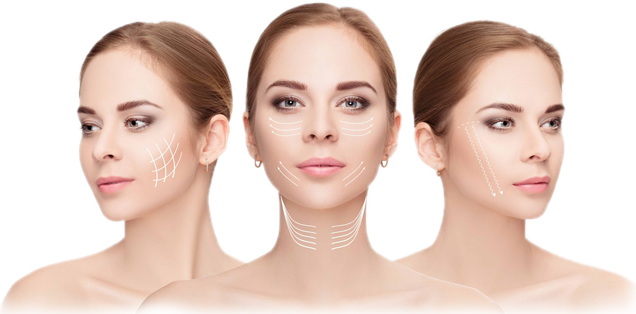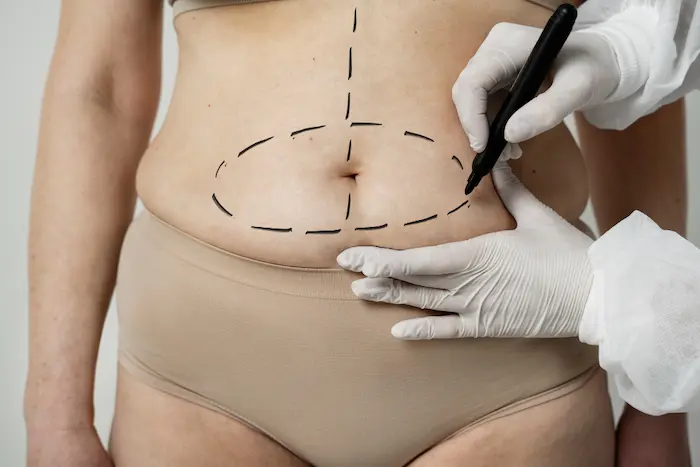
Ear Surgery: Expectations, Milestones, Recovery and Risks
Are you having problems with the appearance of your ears? If yes, have you ever thought about having ear surgery?...
Are you having problems with the appearance of your ears? If yes, have you ever thought about having ear surgery? Many people, who have prominent ears of more than 2 cm in length, often opt for Otoplasty, the medical procedure to reshape the appearance of the outer ear, also called as pinna. Consulting with an experienced board certified plastic surgeon will help you to have a better understanding of this treatment. Evidently, you can decide whether to opt for it the better way.
Let us go through all about ear surgery or otoplasty in detail, including the causes, need for otoplasty, expectations, recovery and all the possible complications associated with the surgery.
What do you know about ear surgery?
Ear surgery or otoplasty is a useful procedure for children, teens, men, and women. It involves reshaping, resizing, or pinning ears for improved ear looks. It requires the plastic surgeon to reshape the cartilages, bones, or skin to make dramatic improvements keeping the patient’s satisfaction in mind.
Plastic surgeons perform ear surgeries by using general anesthesia for children and local anesthesia for adults. They create an incision behind the ear and apply stitches to the operated area after surgery. These stitches leave a minor scar behind the ear, which will eventually fade away with time.
But what is the need for this surgery? Under what circumstances do people opt for otoplasty? Here is an in-depth insight into all the requisite information about outer ear corrective surgery that you would want to know.
Why do you need ear surgery?
Before jumping to the ear surgery implications, it is essential to know the key causes of ear surgery. People undergo ear surgery on the outer ear, which has a minor function in hearing. The average size of the ear is around 2 cm from the head side. Ears prominent than this size can go for a medical procedure to improve their appearance. This prominent in ears can be due to genetic disorders or health conditions affecting ear cartilage growth. In addition, any injury to the ears may cause them to become prominent.
What to expect from ear surgery?
After going through the ear surgery, patients may expect several changes in their ears and their daily routine. Here are some of those expectations.
- Dressing over the ears for a few days with daily change to prevent hematoma.
- Protective headband over the ears at night after permanent removal of the dressing. It prevents ear pulling during sleep.
- Soreness, numbness, or tingling, and slight bruising for around two weeks.
- It should be easy to travel any time, return to school after 7 days, wash hair after 2 weeks, swim after 6 weeks, participate in contact sports after 12 weeks, etc.
Ear surgery healing milestones
It would be convenient to understand the expectations after the ear surgery with the quick healing milestones according to the time. These are:
- First 24 hours after surgery: It is the critical time when the patient needs much rest. The patient must ensure to stay hydrated during this period. As for the issues, ears may feel swollen, mild compression around the areas, etc. Taking as much rest as possible would be advisable.
- Between 24 hours to 72 hours after surgery: Ears will notice improvement after the end of the third day post surgery. Further, the swelling of the ears and around them should start decreasing. The patient can use compression bandages for three days after the surgery to improve the condition.
- After 3 days to 7 days of surgery: It is easy for the patients to return to work after 7 days of the ear surgery. The swelling of the ears is likely to decrease by this time. However, for patients having outdoor jobs or jobs involving physical stress, it is better to take rest for a few more days.
- Between 7 days to 14 days to surgery: It is easy for the patients to resume daily personal or professional life after 14 days of the ear surgery. By this time, you can expect the ear swelling to reduce considerably.
- After 90 days of surgery: By the end of the ninety days, it is easy to get completely recover with ear swelling completely gone.
If you find any lapses in any of these milestones, seeking prompt consultation with your surgeon would be advisable.
The road to recovery
The recovery after an ear surgery depends on the type of the surgery and the expertise of the surgeon performing it. Depending on the precision and expertise of the plastic surgeon, ear surgeries can be with or without incision. The recovery time is faster for the incision-less surgeries, which may be within one month. The recovery time for surgeries with incisions varies between two to three months.
In addition, you can follow several important tips to make way for prompt recovery:
- Avoid carrying heavy items for around one month
- Do not bend down for household work or for any exercise
- Keep the operated ear dry as much as possible until the wound heals
- Do not swim unless your surgeon allows for it
- Do not lie down or sleep on the treated side else you may feel pain or discomfort
- When sleeping, try your best to keep your head elevated in order to reduce swelling
- Make sure to keep the head cool, especially you put on bandages
- Use the medication or ointment as suggested by your surgeon for speedy healing of your scars
- Do not expect miracles; instead, have realistic expectations
Possible complications associated with ear surgery
Like any other medical procedure, it is essential to have proper information about the possible complications of ear surgery. This will help you to be ready for any of these things to happen after the surgery without hitting the panic button.
- Numbness: The ears may go numb for multiple weeks following the surgery. This numbness goes away after a month or so.
- Unsatisfactory results: Ear surgeries are reconstructive or cosmetic procedures prone to unsatisfactory results. The patients may not expect asymmetrical ears. Too far or too close from the head, etc.
- Need for revision surgery: The ears may start to stick out again after the ear surgery. This calls for immediate revision surgery.
- Bruises: The painful blood clot under the skin may appear after one to three days of surgery. This will lead to bruises and accompany pain as well.
- Infections: Every surgery has an infection risk, including ear surgery. You can quickly avert any such risk by treating it with antibiotics to limit further complications.
Wrapping Up
Many people prefer opting for the treatment of their prominent ears, which can be due to genetic features or health conditions. This is where surgeons suggest the patients undergo Otoplasty. The surgery refers to reshaping or resizing your ears and is finding many takers all across the globe. It is however essential to understand the nuances involved with otoplasty before going under the knife.
From the definition to understanding the process and the key expectations after the ear surgery, every particular holds high importance in making up your mind to go for the surgery. Equally important is to be aware of risks and side effects that could surface after the ear surgery. Some of these can be ear molding, soreness, numbness, slight bruising, etc. It is therefore wise to seek the help of an expert and board certified plastic surgeon to perform the surgery with high-end expertise and minimum risks.
To look out for a consummate and experienced surgeon, you can browse through our website. We help you to search for the best surgeons in your preferred location. After going through their profiles and having an online or offline one-to-one consultation with them, you may proceed for the surgery. Feel free to get in touch with us to know more on how to search for the best plastic surgeon for otoplasty in your preferred location and at a cost that does not put too much load on your pocket.






Comments
Login & Write comment